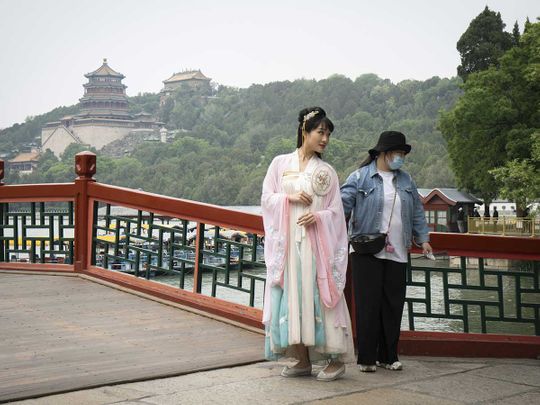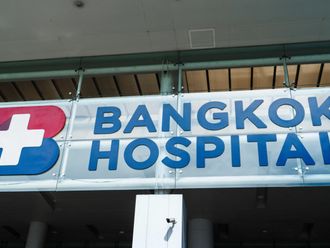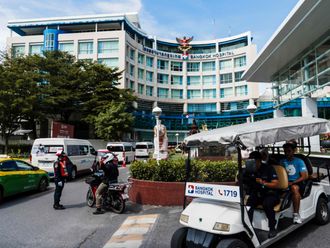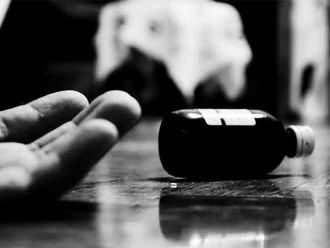
Beijing: China's state broadcaster CCTV on Monday attacked US Secretary of State Mike Pompeo's "insane and evasive remarks" over the origins of the coronavirus pandemic, further fuelling Sino-US tensions.
Pompeo on Sunday said "enormous evidence" showed the virus originated in a lab in China, doubling down on previous claims that have been repeatedly denied by the WHO and various scientific experts.
US officials also believe China covered up the extent of the coronavirus outbreak - and how contagious the disease is - to stock up on medical supplies needed to respond to it, intelligence documents show.
Chinese leaders "intentionally concealed the severity" of the pandemic from the world in early January, according to a four-page Department of Homeland Security intelligence report dated May 1.
The sharper rhetoric coincides with US administration critics saying the government's response to the virus was slow and inadequate. President Donald Trump's political opponents have accused him of lashing out at China, a geopolitical foe but critical US trade partner, in an attempt to deflect criticism at home.
Not classified but marked "for official use only," the DHS analysis states that, while downplaying the severity of the coronavirus, China increased imports and decreased exports of medical supplies. It attempted to cover up doing so by "denying there were export restrictions and obfuscating and delaying provision of its trade data," the analysis states.
The report also says China held off informing the World Health Organization that the coronavirus "was a contagion" for much of January so it could order medical supplies from abroad - and that its imports of face masks and surgical gowns and gloves increased sharply.
Those conclusions are based on the 95% probability that China's changes in imports and export behavior were not within normal range, according to the report.
China informed the WHO of the outbreak on Dec. 31. It contacted the US Centers for Disease Control on Jan. 3 and publicly identified the pathogen as a novel coronavirus on Jan. 8.
Chinese officials muffled doctors who warned about the virus early on and repeatedly downplayed the threat of the outbreak. However, many of the Chinese government's missteps appear to have been due to bureaucratic hurdles, tight controls on information and officials hesitant to report bad news. There is no public evidence to suggest it was an intentional plot to buy up the world's medical supplies.
Intelligence officials blamed
In a tweet on Sunday, the president appeared to blame US intelligence officials for not making clearer sooner just how dangerous a potential coronavirus outbreak could be. Trump has been defensive over whether he failed to act after receiving early warnings from intelligence officials and others about the coronavirus and its potential impact.
"Intelligence has just reported to me that I was correct, and that they did NOT bring up the CoronaVirus subject matter until late into January, just prior to my banning China from the US," Trump wrote without citing specifics. "Also, they only spoke of the Virus in a very non-threatening, or matter of fact, manner."
Trump had previously speculated that China may have unleashed the coronavirus due to some kind of horrible "mistake." His intelligence agencies say they are still examining a notion put forward by the president and aides that the pandemic may have resulted from an accident at a Chinese lab.
Speaking Sunday on ABC's "This Week," Pompeo said he had no reason to believe that the virus was deliberately spread. But he added, "Remember, China has a history of infecting the world, and they have a history of running substandard laboratories."
"These are not the first times that we've had a world exposed to viruses as a result of failures in a Chinese lab," Pompeo said. "And so, while the intelligence community continues to do its work, they should continue to do that, and verify so that we are certain, I can tell you that there is a significant amount of evidence that this came from that laboratory in Wuhan."
Previous outbeaks
The secretary of state appeared to be referring to previous outbreaks of respiratory viruses, like SARS, which started in China. Pompeo repeated the same assertion hours later, via a tweet Sunday afternoon.
On Monday, China's official Global Times newspaper said Pompeo was making "groundless accusations" against Beijing by suggesting the coronavirus was released from a Chinese laboratory.
The populist tabloid published by the ruling Communist Party mouthpiece People's Daily said the claims were a politically-motivated attempt to preserve Donald Trump's presidency and divert attention from the U.S. administration's own failures in dealing with the outbreak.
"As the US presidential election campaigns are underway, the Trump administration has implemented a strategy designed to divert attention from the incompetence it has displayed in fighting the pandemic," the paper said in an editorial.
Pompeo target of attacks
The paper has made the US top diplomat a main target of its attacks, in recent weeks describing him as "despicable" and of having "evil intentions" by blaming China for having caused the pandemic.
While the virus is believed to have originated in the central Chinese city of Wuhan, most scientists say it was most likely transmitted from bats to humans via an intermediary animal such as the armadillo-like pangolin. That has placed the focus on a wet market in the city where wildlife was sold for food.
The theories about a possible human release have centered on the Wuhan Institute of Virology which undertook research into the transmission of pathogens from animals to people.
Beijing has repeatedly pushed back on U.S. accusations that the outbreak was China's fault, pointing to many missteps made by American officials in their own fight against the outbreak. China's public announcement on Jan. 20 that the virus was transmissible from person to person left the US nearly two months to prepare for the pandemic, during which the U.S. government failed to bolster medical supplies and deployed flawed testing kits.












